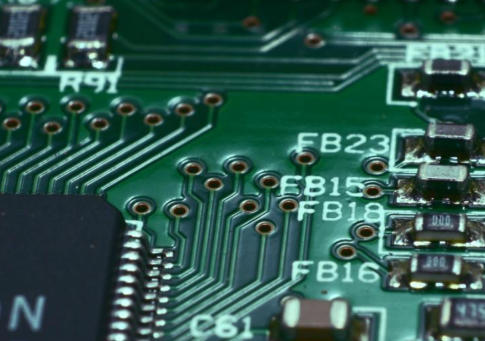Through-hole PCB technology remains fundamental to many electronic products, especially those requiring high mechanical strength or high-power components. The pins of through-hole components penetrate the board and are soldered in place, requiring designers to pay close attention to spacing. Improper spacing not only compromises soldering quality but can also lead to short circuits, thermal stress concentrations, and even defects during manufacturing. Imagine placing a small resistor pin too close to another hole; it could cause a bridge during wave soldering, ruining an entire batch of boards.
Let's first discuss the basic through-hole spacing types. Hole-to-hole center spacing is the most common, with a recommended minimum of 0.8mm to 1.0mm, depending on the number of layers and component density. For standard DIP (Dual In-line Package) packages, such as the classic 74 series IC, the pin pitch is 2.54mm (0.1 inch), which has become the industry standard. However, in actual design, you need to consider pad size: the pad diameter is generally 1.5 to 2 times the hole diameter, which varies from 0.6mm to 1.2mm depending on the pin thickness. If two pads are too close together, with a spacing less than 0.5mm, shorts can easily occur during tinning.

Through-hole
Spacing also affects the distance between the board edge and the hole. The IPC-2221 standard recommends a minimum spacing of 1.5mm between the hole center and the board edge to prevent edge damage and stress concentration during machining. Why is this important? Because through-hole boards often require manual component insertion during assembly. If the edge spacing is insufficient, the components can easily skew, hindering automated testing. Furthermore, in multilayer boards, inner layer traces must avoid through-hole areas. Insufficient spacing can affect signal integrity, especially in high-frequency circuits.
When it comes to high-density designs, optimizing spacing becomes critical. Some designers attempt to reduce the hole spacing to 0.6mm, but this requires advanced manufacturing processes, such as using thinner board material or precision drilling machines. For example, on a power module PCB, the vias for high-current electrolytic capacitors should be spaced wider, at least 2mm apart, to dissipate heat and reduce parasitic inductance. Conversely, on low-power signal boards, spacing can be tighter, but keep in mind thermal expansion: different materials have different coefficients of thermal expansion, and too small a spacing may cause the board to deform when the temperature fluctuates.
In practice, software tools such as Altium or KiCad can automatically check spacing rules. You can set DRC (Design Rule Check) parameters to ensure that all vias meet minimum spacing requirements.
Of course, spacing isn't an isolated issue; environmental and regulatory considerations must also be taken into account. Under RoHS standards, lead-free soldering requires higher spacing to cope with thermal stress and prevent tin whisker growth. In the future, with the widespread adoption of 5G and IoT, though through-holes will be less popular than SMT, they will remain essential in high-power applications.